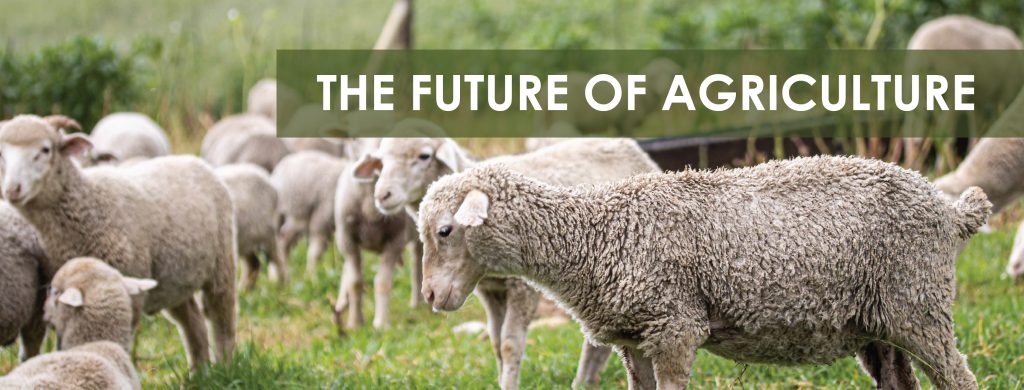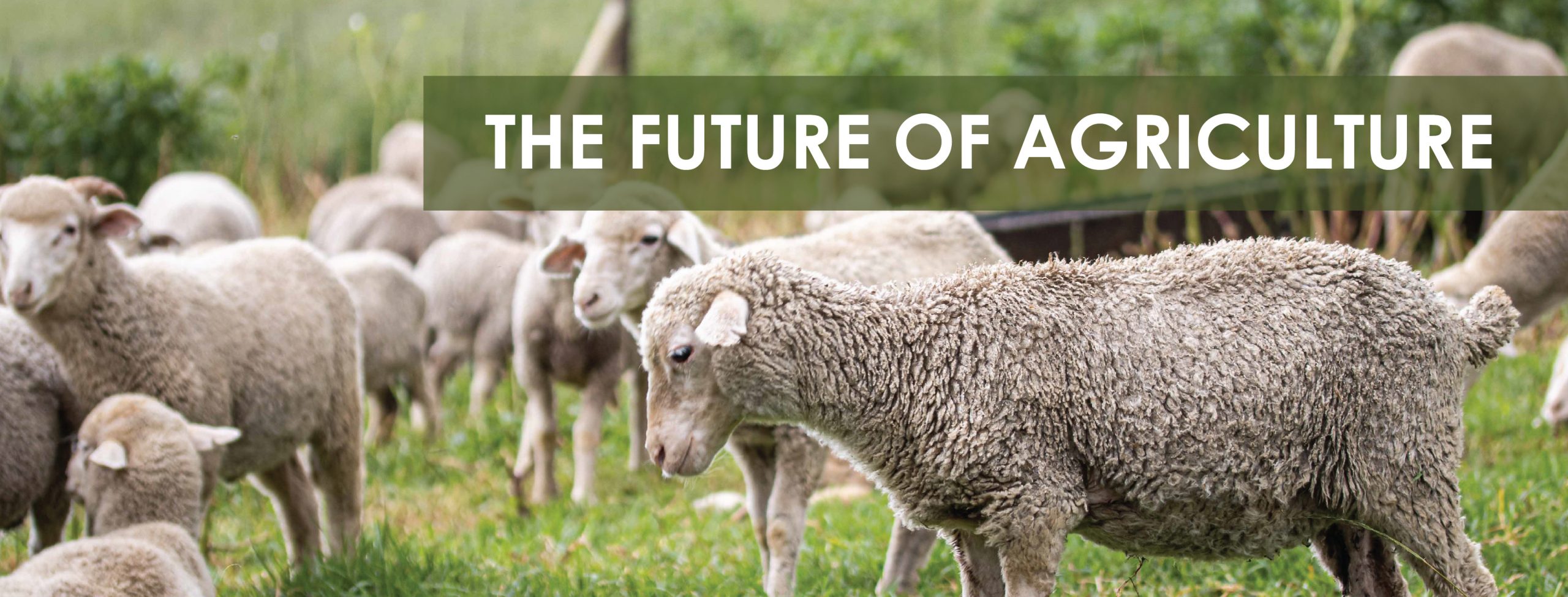“Upon this handful of soil our survival depends. Husband it and it will grow our food, our fuel, and our shelter and surround us with beauty. Abuse it and the soil will collapse and die, taking humanity with it” – Verdas, Sanskrit Scripture 1500 B.C. What is the future of agriculture?

Where Are We Now?
As professionals in the agriculture industry, we need our thinking to go further than sustainability when considering the future generations of farmers and consumers alike.
We need to look towards regenerative practices that nourish our land and society. e at the same time develop more profitable and long-lasting agricultural business models. Having a short-sighted approach leaves us with inefficient practices that are detrimental to both the soil and the crops we yield.
It all becomes quite simple when we look at the core building blocks of our land. Firstly, the soil that allows for life to grow. We are a planet that is comprised of carbon-based life, the simple idea, is; the more carbon we retain in our soil, the more life we get from it. The regeneration of land and producing higher yield crops begins when we do everything we can to nurture our soil.
One example of the resulting damage of unsustainable farming methods is desertification. The process by which fertile land becomes desert, typically as a result of drought, deforestation, or inappropriate agriculture. We can really see the harsh realities that await us if we don’t change this.
This is the unfortunate reality that we are living in right now. Much of our fertile land being used unsustainably.
The use of tillage equipment, fertilisers, pesticides, herbicides and GMO crops have degraded our soils to such an extent that some experts predict another mass extinction of life on the planet.
Don’t get me wrong, this is not about organic farming, as they use tillage for weed control. Tillage breaks the topsoil and disturbs the bacteria cultures. These are critical to nurturing healthy soil and increasing the amount of carbon retained in our soils. This defeats the object of the practice and is not sustainable.
If a farmer increases the amount of carbon per hectare of land by 1%, that hectare of land is capable of holding 250 000 more litres of water. Why are we not promoting practices that encourage the strengthening of the foundations of healthy agriculture?
The conventional farming practice of planting cash crops is probably one of the biggest reasons for desertification. Cash crops are where the lands are prepared using ploughs and disks, spraying with herbicides and pesticides before planting to eliminate all the competition that might compete for moisture. In the process, many of the life forms that increase water retention and soil nutrition are killed at the same time.
There is no blunt object solution to farming – that much is clear. Agriculture is a commercial activity. The success of farming does not rely on a commercial mindset, we are not developing a product, we are working within systems that nature has developed over millions of years.
We cannot control nature. Big agriculture companies fail to understand as they continue to destroy soil in the name of science. The only way forward is to farm with nature.

The effects of this are starting to show up more and more often. For example, in the United States alone, 1 in 4 people have 2,4-D (Dichlorophenoxyacetic acid – a systemic herbicide) in their bodies.
This side effects of which can be:
- Reproductive system
- Non-Hodgkin Lymphoma
- Parkinson’s disease
- Endocrine system
- Immune system
How much money is spent annually in marketing to convince the consumer that the food that is produced is healthy and wholesome? Are we starting to believe our own lies for the sake of profits?
Do we really want to use management practices that are detrimental to our whole being, from soil, animal, insect and human health?
Regardless of all our accomplishments, we owe our existence to a six-inch layer of topsoil and the fact that it rains.
What We Can Change
Regenerative agriculture is probably a term which is currently being used to describe many farming practices that build up topsoil and improve various aspects that are destroyed using conventional farming management practices.
The question to ask here is: What can I do better to improve the chances of my dependants to farm my land? Without inheriting a farm that has such poor degraded soils that they don’t want to come back to the farm.
According to Gabe Brown, author of Dirt to Soil, he lists the 5 principles of soil health:
- Limited disturbance
- Mechanical and Chemical
- Tillage destroys soil structure and kills microbes, specifically mycorrhizal fungi
- Mechanical and Chemical
- Armour
- Always keep your soils covered
- Cover crops
- Green planting
- Always keep your soils covered
- Diversity
- Strive for diversity in both plant and animal species
- Living Roots
- Maintain a living root system in the soil as long as possible
- Integrate animals
- Nature does not function without animals
There is no recipe for regenerative agriculture. We’ve tried to do it in the past with conventional methods and have failed dismally.
The fact that we don’t have a recipe for regenerative agriculture, is probably the main reason why farmers say it won’t work on their farm. Change is the only constant and all change is hard.
But what happens if you start applying the 5 principles of soil health on your farm?
- Your soil biology improves
- Water penetration
- Water retention
- Mineral cycles
- Improved pest resistance
- Improved weed control
- Your soil carbon increases
- This is especially true when animals are integrated.
- Your soil organic matter increases
- Every 1% increase on organic matter you store between 160 000 – 233 000 litres of water more per hectare.
The living root is vital for the soil biology.
The sugars excreted by the plant on the root tip, are used by the various bacteria to multiply. The larger the diversity of the plants, the larger the diversity of bacteria in the soil.
The healthier the soil the more resilient the plants are against pests. Because of the improved water retention of the soil, the plants also become more drought resistant.
Improving the diversity and getting a living root in the soil for as long as possible, is a program. This must be a rotational planting program over a period of 4 – 6 years. It depends on the location and climate of the farm.
Adding animals to harvest the cover crops is fundamental to the success of improving soil health. If you treat your cover crop like a cash crop you can harvest twice in a year instead of once.
Depending on the meat price, the returns with beef and sheep on cover crops equal the return of a cash crop. With less risk, and you are improving your soil health.
Stacking, which is to diversify the animals on the cover crop or the veld, also helps with parasite control in chickens, pigs, sheep, goats, beef etc. This has a positive effect on the soil biology.
Farmers that are already using the 5 principles of soil health can cut back on the use of synthetic fertiliser. One farmer has decreased his input costs by R 1000.00/hectare, on 2000 hectares, this is when it starts making sense.
What is the future of agriculture?
If we look at the benefits of regenerative agriculture, from human health to soil health, it is only a matter of when rather than if I must change. We have to start producing food that is beneficial to the consumer before they start demanding it.
Read more here or follow us on social media


Theuns
1 Aug 2019Great I would love to keep in contact. I believe in the5
principle method you taik about. I work with small scale farmers in Zambia and southern Africa. Trying to get them to understand and apply.